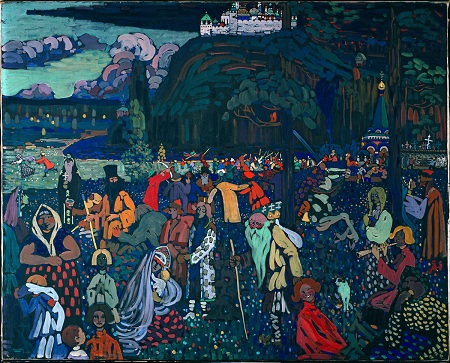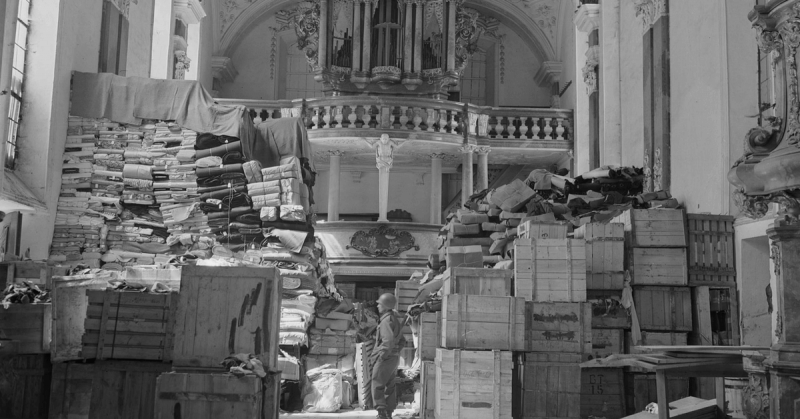The heirs of a Jewish art collector, Emanuel Lewenstein, filed a claim in New York against a German bank regarding a painting by Russian artist Wassily Kandinsky. According to the filing, the painting is worth an estimated $80 million dollars, was sold in a controversial auction in 1940 and now hangs in a gallery in Germany.
“The Colorful Life” or “Das Bunte Leben” is considered one of Kandinsky’s most important works.

James Palmer is an employee of Mondex, a Canadian company that works with families to reclaim stolen artwork. He said that he is hopeful that the Lewesteins can prove they own the painting.
Lewenstein lived in the Netherlands when he purchased the artwork after it was painted in 1907. After his death, his widow loaned it to the Stedelijk Museum in Amsterdam to keep it safe.
After her death and shortly before World War II, the possession of the painting passed to her children, Robert and Wilhelmine. Fearing persecution, Wilhelmine moved to Mozambique in 1938 and Robert left for New York in 1939.
In 1940, after the Germany invaded the Netherlands, the painting was sold at auction along with dozens of other looted works. The Lewensteins say that the painting was sold without their permission and at a heavily discounted price due to uncertainty over the ownership.
The catalog from the October 1940 auction by Frederik Muller & Co. lists the Kandinsky painting as lot 204. It is listed among several paintings from a famous collection that had been owned by Jacques Goudstikker, one of the most famous Jewish art dealers in Amsterdam.
“The Colorful Life” is recorded as having sold for 250 Dutch Guilders, which represents an 80-90% reduction in value for the painting. The Lewensteins claim that they never received anything from the sale of the painting.
According to the Lewensteins, it is not likely a Jewish art dealer in the Netherlands at that time would have brought attention to themselves by putting a substantial art collection on sale.
In 1972, BayernLB purchased the painting. BayernLB is a German bank owned and operated by the Bavarian government. They have loaned the painting to the Lenbachhaus Gallery in Munich.
Another painting by Kandinsky sold last year for a record $23.2 million. The Lewenstein heirs stand to make a fortune if they can prove the painting was stolen from their family.
Francesca Davis is Robert Lewenstein’s daughter and one of the potential heirs. She recently received a photo of the painting and was amazed by it.
Davis lives in Texas and works in marketing. She said that the painting was important to her family. Her family lost everything in the war, including relatives. She grew up hearing the stories of their escape through Europe.
Davis believes that Kandinsky was a genius and that “The Colorful Life” is a treasure that belongs to the world.
Daniella Luxembourg is an art dealer and expert. She said that this work was “iconic” in that it marks a point just before he began painting purely abstract pieces. She called it “one of his most important works.”
Before a decision can be made as to the ownership of the painting, there are jurisdictional issues to be resolved. Either the New York courts will hear the case or the German Limbach Commission will look at it. The Limbach Commission advises on the return of stolen cultural property, The Guardian reported.
Museums generally use the “Washington Principles” to determine how to handle looted artworks. The bank believes it has lent the work to the museum on a long-term loan. The bank is not covered by the “Washington Principles.”
The bank issued a statement in which they express their belief that they obtained the painting legally and have loaned it to the Lenbachhaus museum. They further stated their willingness to participate in a review by the Limbach Commission but want the Commission’s decision to be binding on all parties. They also said that they wish to see the painting remain on display in Lenbachhaus and not be taken away.
